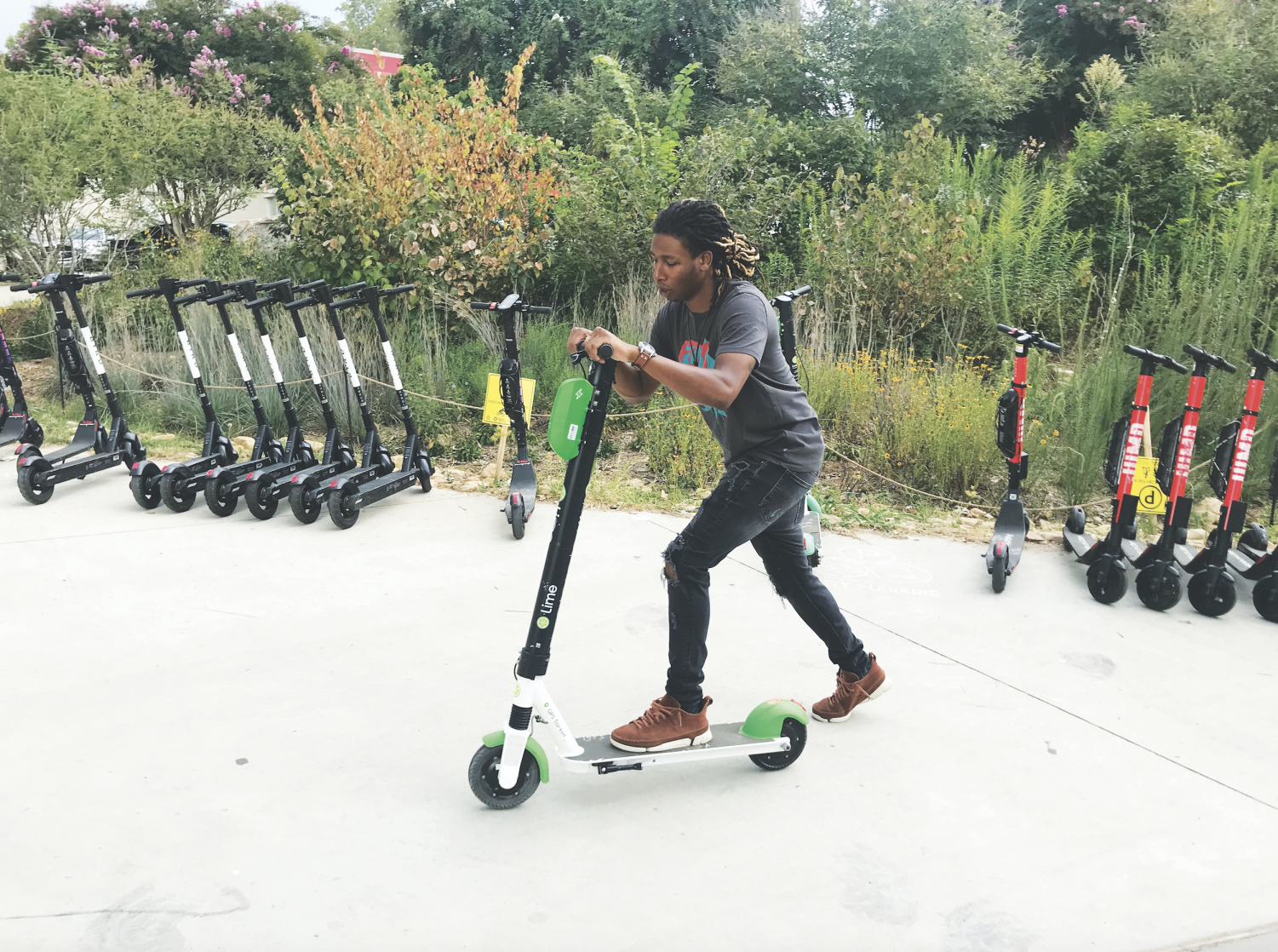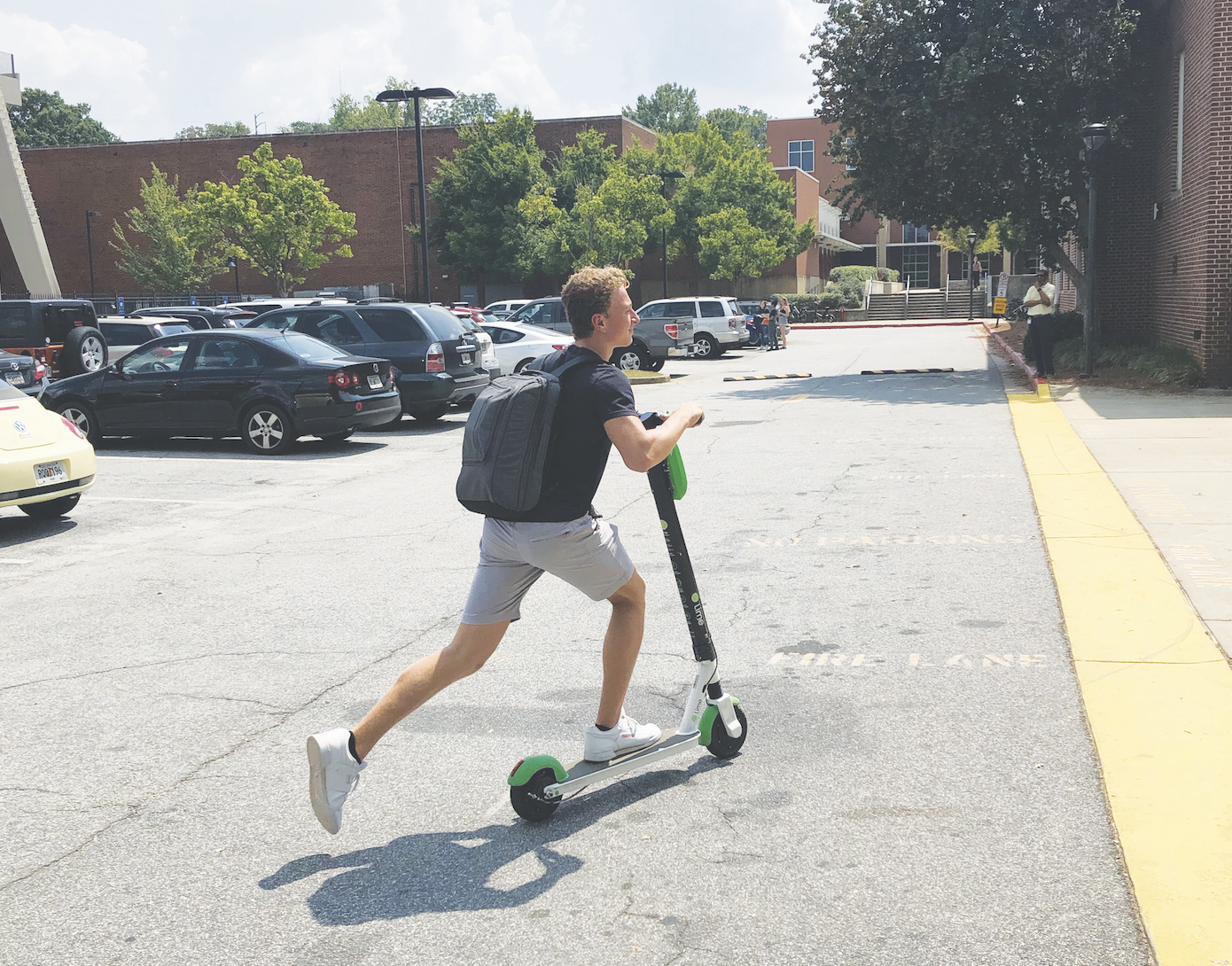
Lindsay Ruhl is a senior, and this year she's the news managing editor and the social media editor. She loves making fun Instagram Story posts and covering...


As the city makes room for e-scooter companies like Lime and Bird, residents' safety concerns rise.
September 16, 2019
The first casualty was Eric Amis Jr., 20. On May 16, he was riding one of the 16,000 electric scooters in Atlanta when he was killed by a speeding SUV driver near the West Lake MARTA station.
The second casualty was William Alexander, 37, who was hit by a bus on July 14. The third casualty was on July 27, when Amber Ford, 34, who was visiting Atlanta from Alabama, was hit while on a date with her husband. The fourth was Quinterry McGriff, who ran a red light and was hit by an oil truck early in the morning of Aug. 6, 2019.
Atlanta now leads the country in electric scooter deaths, according to Curbed Atlanta (a real estate and urban design blog that covers cities all over America), after a sudden rise in popularity, prompting a series of government responses.
The first electric scooters took to Atlanta streets in May 2018. Since then, eight electric scooter and bike companies have lined the sidewalks.
“Bird was the first company to drop scooters in Atlanta, and in classic government fashion, it took us a while to get our act together,” said Matt Westmoreland, Atlanta City Councilman.

SCHOLASTIC SCOOTING: Senior Grant McNiff rides an e-scooter to school in the morning. Many Grady students opt to use this mode of transportation as their way to and home from school.
Atlanta passed an ordinance at the start of 2019 to create a registration process for electric scooter and bike companies. The ordinance capped the number of devices per company at 2,000. The city also restricted the use of e-scooters to streets and encouraged helmet use.
In response to several casualties and serious injuries from e-scooter riders, Atlanta Mayor Keisha Lance Bottoms issued two executive orders. The first order prohibited permits for new scooter companies, and the second order banned the use of scooters from 9 p.m. to 4 a.m.
The mouth of the Eastside trail of the BeltLine, a public walkway through Midtown Atlanta, is a hot-spot for e-scooters. Grady sits across the street from this part of the BeltLine, creating an impact on this school’s community.
Senior Grant McNiff works at Busy’s Shaved Ice and Coffee across the street from Grady and the BeltLine. He gets off work at 9 p.m., just after the scooters are disabled.
“It’s a problem for me because I can’t ride them home from work,” McNiff said. “I have to walk home.”
Johan Hood, an employee of Mint Salon at the end of the BeltLine, enjoys riding scooters as a fun way to relieve stress.
“I have to worry too much about falling to worry about my problems,” Hood said.
Piedmont Park is also easily accessible from the Eastside trail. Senior Olivia Benedict rides e-scooters around Piedmont Park every Sunday with a friend as a tradition. However she does not ride on the streets because she fears for her safety.
“I feel like I would swerve and maybe get hit by a car or something, so, I try to avoid doing that at all costs,” says Benedict.
The policy has not gone without push back. Niklas Vollmer, a professor at Georgia State University and an advocate for safer streets, is critical of the ban and believes it does not address the real issue.
“I think the mayor’s kind of response [the curfew] is not where it needs to be,” Vollmer said. “We need to be working on safe infrastructure and slowing speeds down, not just banning scooters.”
Keane said the city understands the advantages of e-scooters, but that currently, Atlanta’s streets can’t support the popularity of the dockless vehicles. He views the ban as a temporary solution until the city leaders can improve Atlanta’s infrastructure.
“The City of Atlanta wholeheartedly supports mobility around the city on scooters,” Keane said. “We thought banning them at night was the smart and responsible move, temporarily, until we get some of the other safety measures put in place so people can be as safe as they can be.”
Vollmer said there are two, short-term solutions the city could pursue besides banning scooters. First is lowering the speed limit. Pedestrians are 80 percent more likely to survive a crash with a vehicle if the vehicle is driving 20 mph than if they were driving 40 mph. The second is re-timing the traffic lights for streets that are naturally faster, such as West Peachtree Street, a road that had one e-scooter fatality.
Vollmer has led multiple protests advocating for safer streets. The most recent was a direct response to the e-scooter curfew. It included the artistic symbol of “putting a car to sleep.”
On the steps of Atlanta City Hall, a yellow Volkswagen Beetle was publicly “put to bed” using teddy bears and blankets that displayed three demands for making Atlanta safer. The demands included slowing the speed limit down to 25 mph, implementing the “Complete Streets” project more quickly, and focusing on “Vision Zero,” a movement that works toward zero traffic traffic-related fatalities.
“Enough is enough, and people are being picked off one by one,” Vollmer said. “We are focused on saving lives and getting infrastructure that protects people.”
Atlanta Bike Coalition director Rebecca Serna said the widespread trend of e-scooters has brought attention to the problem presented by cars. Safety issues on Atlanta’s streets have existed much longer than e-scooters have been around. She, too, is concerned the ban is not enough to solve for these dangers.
“The safety issues on our roads are there all the time, not just in those hours,” Serna said. “They are not safe during the daytime and then, suddenly, become dangerous at night.”

Lindsay Ruhl is a senior, and this year she's the news managing editor and the social media editor. She loves making fun Instagram Story posts and covering...